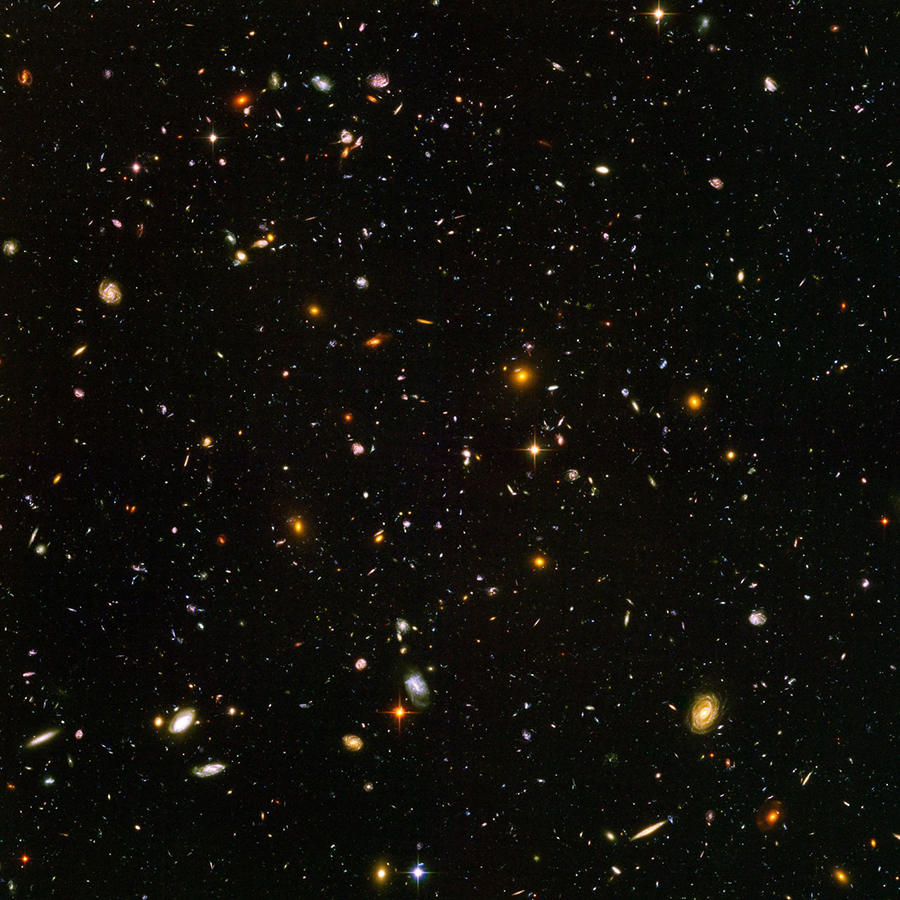In Space, Time, and War
Digital Cosmologies and Militant Terrains
Culver Center of the Arts
September 21, 2024 to April 13, 2025
Artists in thematic section: EPOCH, Maggie Hazen, Huntrezz Janos, Eugene Lally, NASA, Sheila Pinkel
Digital imaging is inseparable from its origin in Southern California’s Cold War research labs. Jet Propulsion Laboratory (JPL) engineer Eugene Lally’s 1961 concept paper titled “Mosaic Guidance for Interplanetary Travel,” describing the possibility of a sensor connected to a computer to image stars and planets for space navigation, is generally regarded as the first description of digital imaging. It exemplifies the interwoven-ness of digital photography and the military-industrial-scientific complex that served as its incubator.
The term “military-industrial-scientific complex” refers to the network of personnel and institutions that collaborate to produce military weaponry and its technologies. President Dwight Eisenhower coined the phrase “military-industrial complex” in 1961—the same year as Lally’s paper—in an address warning against a vague but ominous danger to the nation. The literal and ideological violence of the Cold War thereafter existed in tension with the optimism attached to digital imaging and its novel possibilities. Still today, digital imagery remains ethically and politically fraught given its use in projects of geopolitical expansion, military surveillance, global warfare, and ecological devastation.
Credits
“In Space, Time, and War: Digital Cosmologies and Militant Terrains” is one thematic part of Digital Capture: Southern California and the Pixel-Based Image World, an exhibition that investigates the creative uses of digital imaging by artists over the last six decades. The exhibition spans galleries throughout both buildings of UCR ARTS, and is on view in its entirety from September 21, 2024, to February 2, 2025.
Image: Hubble Ultra Deep Field, 2006. Courtesy of NASA, ESA, and S. Beckwith (STScI) and the HUDF Team



